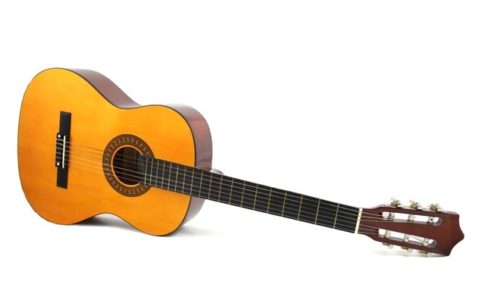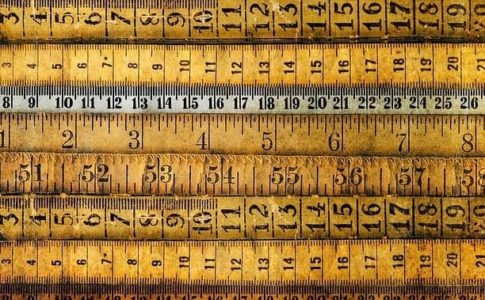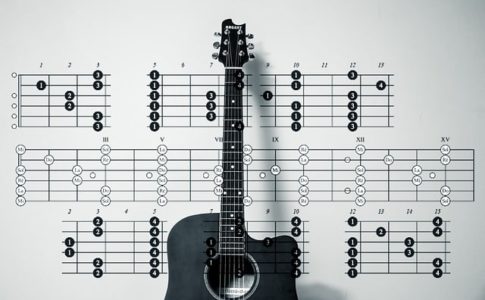First, take a look at the diagram below.
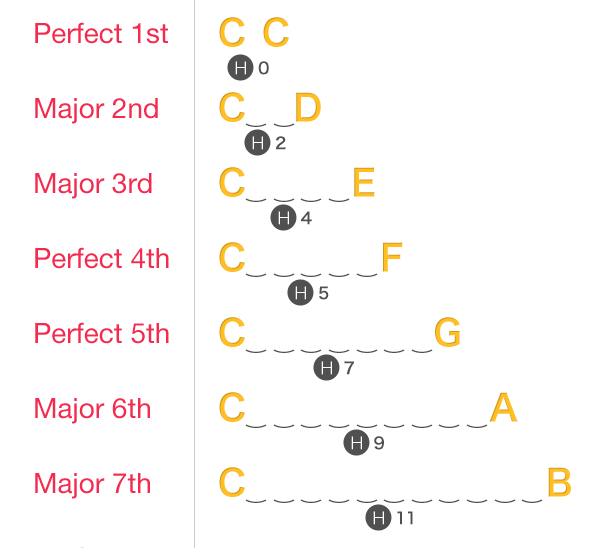
The diagram shows intervals between two sounds.
Can you image the sounds?
The intervals are very important for studying scales (melody) and chords (chord voicing) described later!
First, all twelve sounds are shown.
Contents
Twelve sounds (one octave)
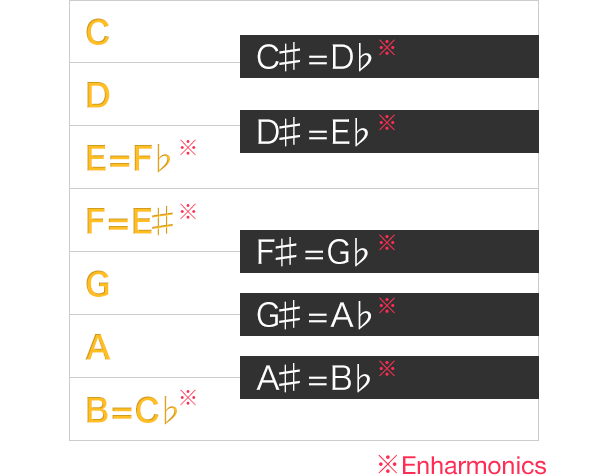
These are all the notes in one octave.
It’s amazing how so many songs are made with only these sounds.
Enharmonics
The first tip to understand the intervals is to understand enharmonics.
Enharmonics mean that a single note has different names. It sounds kind of tricky but you’ll get it.
Let’s study this on the finger board. Again, only the fifth string is used.
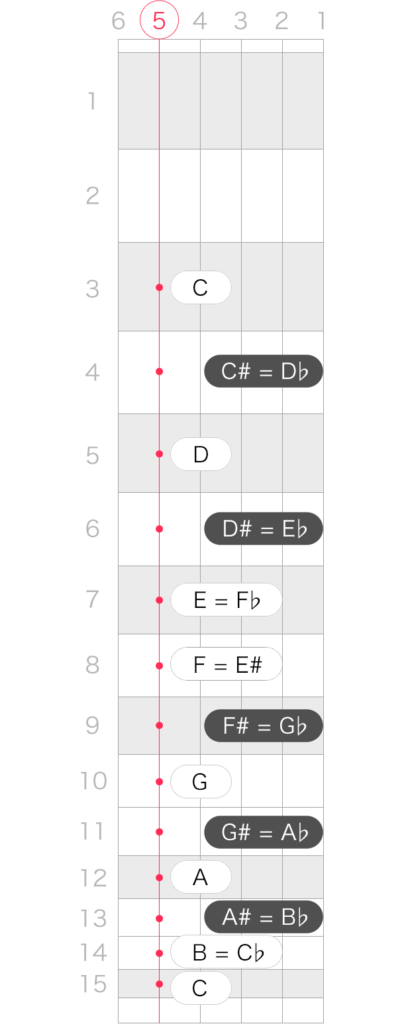
Frets written in white and black letters respectively correspond to white and black keys on a piano.
For example, the fourth fret on the fifth string in the figure can be regarded as half step up from C (C#) or half step down from D (Db). This is enharmonic.
Now, the most important point is described!
Degrees
Let’s take a look at degrees from the first C sound to the twelfth B sound is shown.
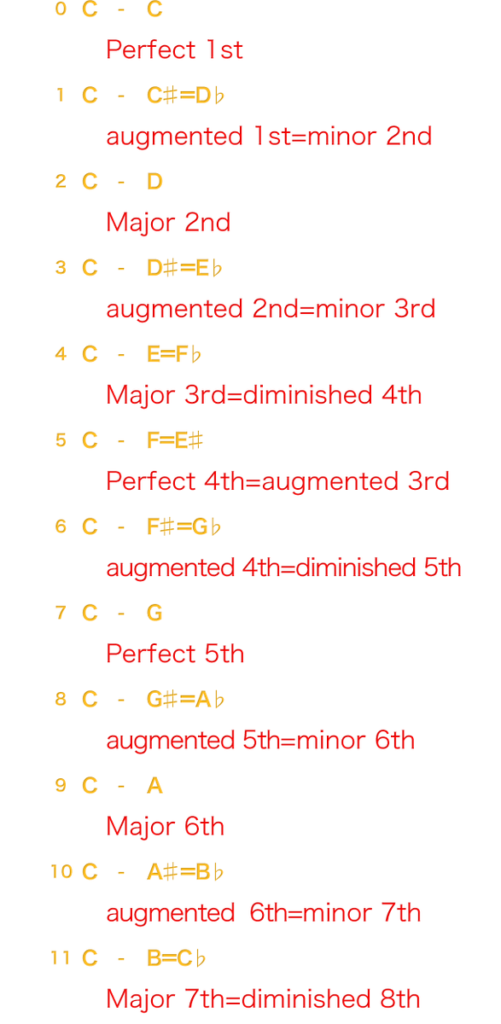
It might look a little difficult but actually, it’s not.
These are nothing by distances from one (reference) note to the other.
“Distance between sounds”=Interval
Here, C is the reference sound and 2 to 12 are the other sounds.
There are certain rules as to how they are written; perfect ○th, major ○th, anf minor ○th.
However, you’ll actually not see Cb, E#, and Fb so often.
I think that as long as you get the system, the name should not be so important.
This will be described more in detail in the section “Tension Note”.



